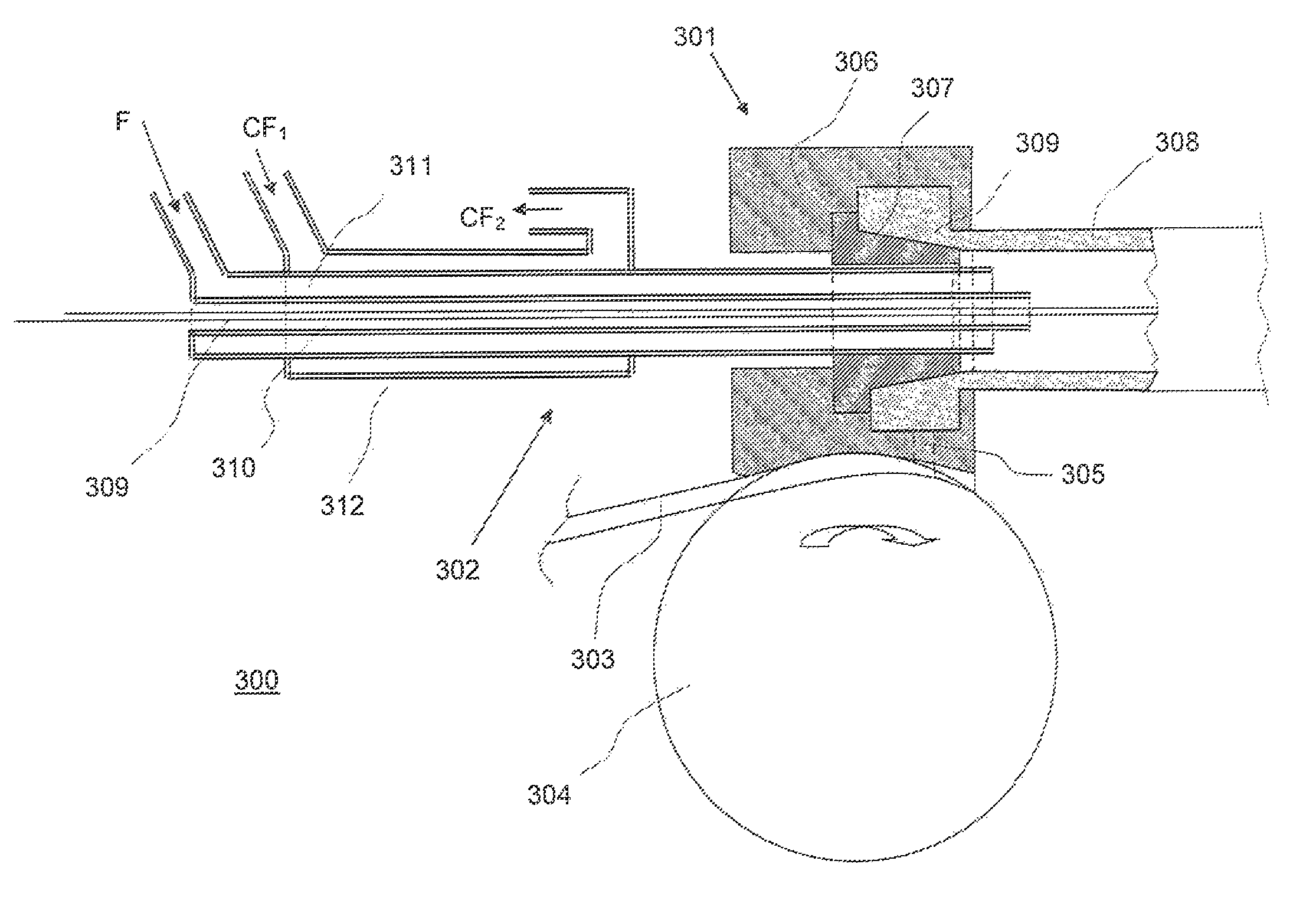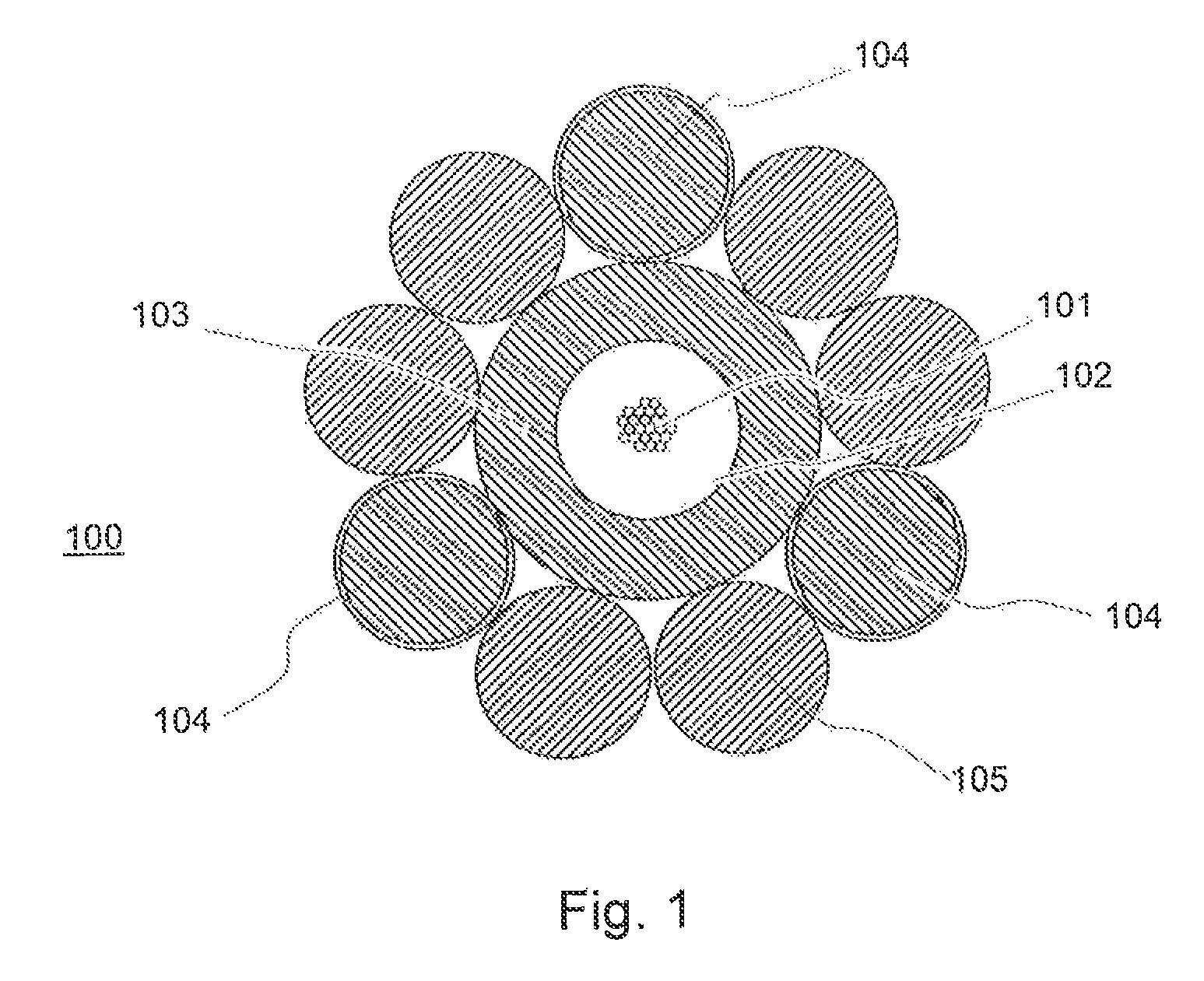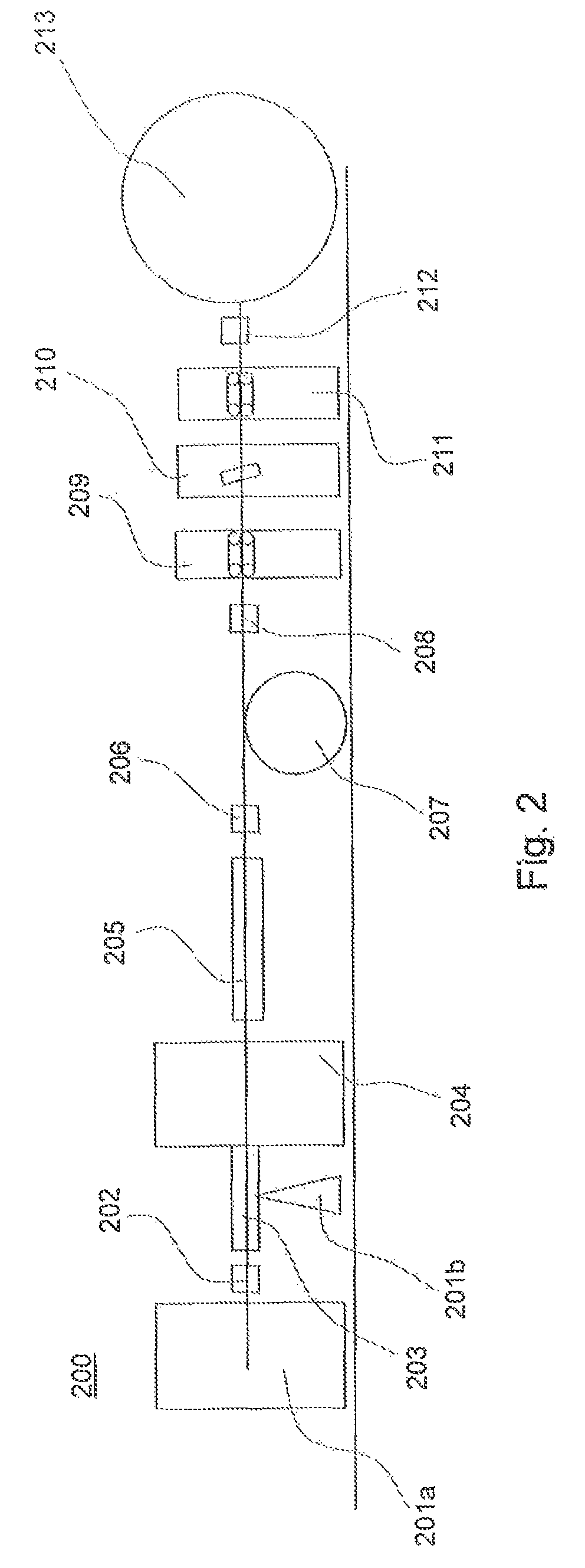Apparatus for manufacturing an optical cable and cable so manufactured
a technology of optical cables and manufacturing apparatus, which is applied in the direction of non-electric welding apparatus, instruments, fluid removal, etc., can solve the problems of unreliable term of excess fiber length, difficult method operation, and high temperature and high pressure in the retaining spa
- Summary
- Abstract
- Description
- Claims
- Application Information
AI Technical Summary
Benefits of technology
Problems solved by technology
Method used
Image
Examples
example 1
Comparative
[0147]An aluminium tube having outer diameter of 4.6 mm and wall thickness of 1.7 mm was produced, housing 6 optical fibers.
[0148]The tube was produced with a Conform™ machine, and was shortened by corrugation.
[0149]A constant pulling force of 40 kgf was applied downstream from the corrugator by a caterpillar.
[0150]A length of 10 km of optical fiber housing tube was produced.
[0151]The desired EFL was of 0.7%.
[0152]The resulting metal tube provided an average EFL of 0%, that means that the shortening due to the corrugation was completely cancelled by the subsequent drawing.
[0153]Frequent breaks were also observed during the production.
example 2
Comparative
[0154]An aluminium tube having outer diameter of 4.95 mm and a wall thickness of 1.25 mm was produced, housing 6 optical fibers.
[0155]The tube was produced with a Conform™ machine.
[0156]The 6 optical fibers were supplied into the tube while it was formed together with a gel Seppigel®H-LAV (Seppigel® is a registered trademark of Seppic).
[0157]The tube was cooled by water spraying.
[0158]After cooling, the tube was shortened of 0.9% by corrugation. The corrugation was applied with the following parameters:[0159]pitch: 10 mm;[0160]width: 3 mm; and[0161]depth: 0.25 mm.
[0162]The shortened tube was then elongated of 0.2% by applying a pulling force of 20 kgf downstream from the corrugator.
[0163]Said pulling force was applied by a motor-driven caterpillar, which operation was controlled to maintain the pulling force substantially constant (±10%)
[0164]A length of 6 km of optical fiber housing tube was produced.
[0165]The desired EFL was of 0.7%.
[0166]The resulting EFL was found var...
example 3
Invention
[0167]An aluminium tube having an outer diameter of 5.6 mm and a wall thickness of 1.8 mm was produced, housing 24 optical fibers.
[0168]The fibers were provided together with a gel Seppigel®H-LAV
[0169]The tube was cooled by water spraying.
[0170]After cooling, the tube was shortened of 0.9% by corrugation.
[0171]The corrugation was applied with the following parameters:[0172]pitch: 11 mm;[0173]width: 3.5 mm; and[0174]depth: 0:3 mm.
[0175]The shortened tube was then elongated of 0.2% by applying a pulling force downstream from the corrugator.
[0176]Said pulling force was applied by a motor-driven caterpillar. The operation of said caterpillar was controlled to vary the pulling speed as a function of the EFL resulting from the measurements of the tube length measured by the forth encoder downstream from the elongation and of the fiber length measured by the first encoder, said lengths being passed in the same period of time (e.g. 40 m / min).
[0177]A length of 2.6 km of optical fibe...
PUM
| Property | Measurement | Unit |
|---|---|---|
| depth | aaaaa | aaaaa |
| depth | aaaaa | aaaaa |
| internal diameter | aaaaa | aaaaa |
Abstract
Description
Claims
Application Information
 Login to View More
Login to View More - R&D
- Intellectual Property
- Life Sciences
- Materials
- Tech Scout
- Unparalleled Data Quality
- Higher Quality Content
- 60% Fewer Hallucinations
Browse by: Latest US Patents, China's latest patents, Technical Efficacy Thesaurus, Application Domain, Technology Topic, Popular Technical Reports.
© 2025 PatSnap. All rights reserved.Legal|Privacy policy|Modern Slavery Act Transparency Statement|Sitemap|About US| Contact US: help@patsnap.com



